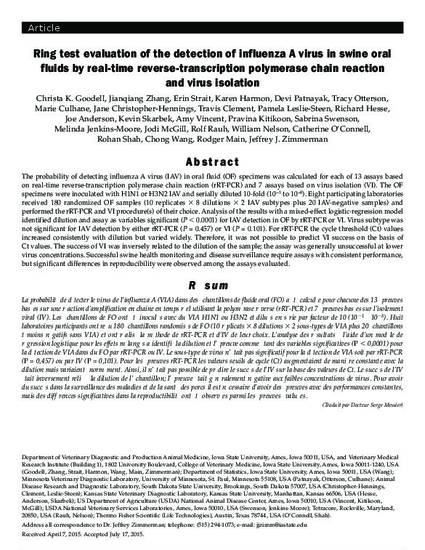
The probability of detecting influenza A virus (IAV) in oral fluid (OF) specimens was calculated for each of 13 assays based on real-time reverse-transcription polymerase chain reaction (rRT-PCR) and 7 assays based on virus isolation (VI). The OF specimens were inoculated with H1N1 or H3N2 IAV and serially diluted 10-fold (10(-1) to 10(-8)). Eight participating laboratories received 180 randomized OF samples (10 replicates × 8 dilutions × 2 IAV subtypes plus 20 IAV-negative samples) and performed the rRT-PCR and VI procedure(s) of their choice. Analysis of the results with a mixed-effect logistic-regression model identified dilution and assay as variables significant (P < 0.0001) for IAV detection in OF by rRT-PCR or VI. Virus subtype was not significant for IAV detection by either rRT-PCR (P = 0.457) or VI (P = 0.101). For rRT-PCR the cycle threshold (Ct) values increased consistently with dilution but varied widely. Therefore, it was not possible to predict VI success on the basis of Ct values. The success of VI was inversely related to the dilution of the sample; the assay was generally unsuccessful at lower virus concentrations. Successful swine health monitoring and disease surveillance require assays with consistent performance, but significant differences in reproducibility were observed among the assays evaluated.
Available at: http://works.bepress.com/chong-wang/33/

This article is from The Canadian Journal of Veterinary Research 80 (2016); 12